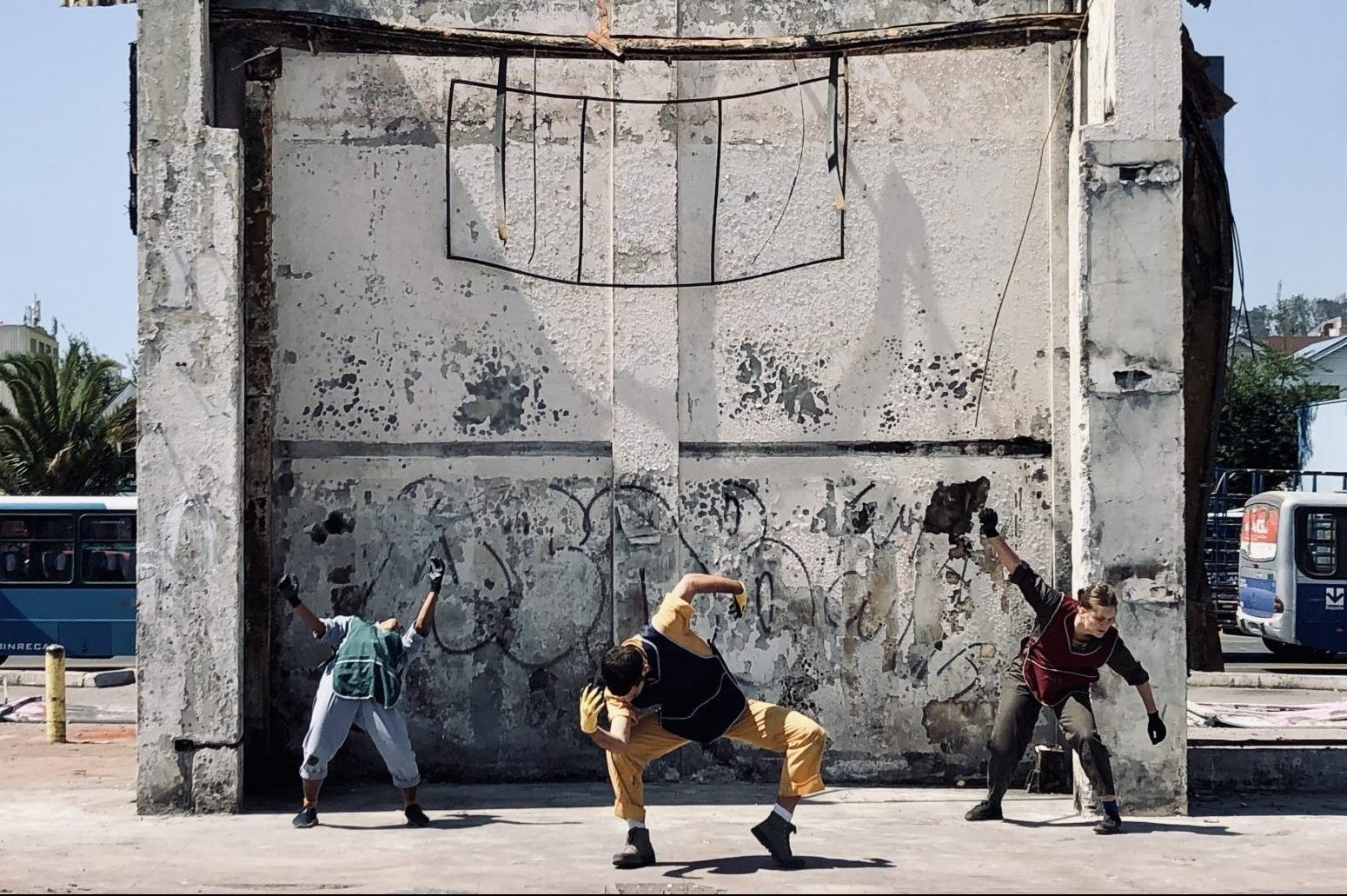Read Associate Artistic Director and ESCAPE dancer Himerria Wortham’s journal entries from her experience in Chile.
Our first day in Valdivia, Chile was in retrospect untelling of what we were up for on this dance tour. We arrived in the city after a 15-hour journey to the other side of the world, tired, and excited to embark on an adventure. I immediately noticed that the architecture in and around the city looked like a small town german village. I was confused because I didn’t expect to find familiarity in the form of Bier Kneipen, German celebrities advertising such as Borris Becker and traffic signs reminiscent of the german streets all the way across the world in Chile.
After our first meal in a small restaurant across the street from our hotel, which we later realized served a variety of local specialties, we took a loop around town. On our walk, we noticed the defacing of several buildings with graffiti and the destruction of facades and windows. The most affected buildings were government-owned and businesses belonging to massive corporations.
“Pensiones dignas para nuestras abuelitas” written on the walls of a boarded-up bank in the middle of the town square hit a sore spot for me. “Decent pensions for our grandmothers,” I don’t understand much Spanish but I understood this message and what it said about the people’s struggle.
The Centro de Experimentación Escénica invited Heidi Duckler Dance to Valdivia to teach a workshop and create a site-specific piece for their week-long event calendar, months before the unrest hit a boiling temperature in Chile. One week before our flight, we heard the first news that there were mass demonstrations in Valparaíso and Santiago all due to an increase in public transportation fees. The news was less telling of the intensity and very vague with the background of why people would take to the streets across the country over a hike in public transit prices. Unsure of the true state of the unrest we asked our friends who lived in the cities we were visiting to give us more insight as to the safety of our travel plans. They explained that there was a lack of media coverage on the issues and that although there was unrest we could still try to move forward with our dance endeavors.
Meanwhile, I ran across an Instagram post from a fellow dancer located in Florida who posted a photo of six police officers in military gear holding menacing batons crouched over one man lying on the street with a bandana in his hands. The caption said in caps “Chile is in a state of emergency and the only major news outlet that is covering it is NBC because the government is blocking external news!!! Santiago and other Chilean cities have been engulfed by several days of rioting as protests over an increase in public transportation costs (and much more) prompted President Sebastian Piñera to declare a state of emergency.”
We decided to fly to Chile despite the unrest with the knowledge that we had locals who would help us navigate the country and with the intention to center our performances and workshops around the conflict that was affecting the people we were coming in contact with.
Our immediate team was made up of three dancers and our director, Heidi Duckler. Months before traveling Heidi connected with a local designer, María Fernanda Videla, from Los Angeles, Chile, who agreed to collaborate with us on the short film that we were filming in the three cities we were visiting. Maria soon became more than our collaborator.
On our second day, as we explored the city and scouted our filming site we ran into a student lead demonstration. The group of demonstrators occupied the bridge that connected the city center to another part of town. While we were told by a local that the demonstrators tend to be peaceful, we did not feel comfortable moving through the crowd. Not long after evading the bridge the police targeted that very crowd with a teargas attack. Before we even saw the thick teargas smoke we witnessed kids in school uniforms no older than 18 running in masses down the street with bandanas covering their faces and rocks in their hands. Two young men picked up cobblestones and threw them at a police van driving in the direction from where the kids were running. As the van passed by I could see the police officers were wearing gas masks. While we began to feel nervous, we watched local pedestrians and shop owners continue with business as usual. Some stopped to watch the demonstrators run or to get out of their way but no one seemed to be afraid. It was bizarre to feel the urgency of the demonstrators and yet watch locals take the situation in as though it was part of the daily life routine. Shortly after, the entire street was filled with smoke and we found ourselves running away from what may have been the most dangerous situation I had ever found myself in.
Later on that day during lunch, María explained to us in the calmest way that this was, in fact, a regular occurrence for the locals of Valdivia. Teargas and demonstrations had become part of life, as the people of the country demanded a new constitution from their government. Although this city was a lot smaller than the major cities we had heard about in the news, it too was affected by the nationwide cry for a new Chile. It was hard to believe that children would leave school in the middle of the school day in order to march for a different future, for their working parents and aging grandparents.
After 5 pm a different group would take the streets, building burning barricades, defacing buildings and busting windows. Streets would be blocked and businesses would close down and prepare to cover their windows with wood so they wouldn’t be targeted overnight. The sidewalks would empty and the bustling life that we experienced during the day would die out. We were told not to walk on the streets after dark.
After days of talking to our local friends about their plight and navigating through town while planning and filming our short film, we started to get a sense of the suppressive state these people were living in. What struck me most was the idea that we began to fear the very institution that is supposed to keep us safe: the government. It really wasn’t the people that we needed to fear but instead the police. We heard stories of the police shooting at demonstrators with rubber bullets and blinding them, young people getting arrested and abused while in custody. As a woman of color this idea that you couldn’t trust the police felt very familiar. Having to walk around with my antennas up, ready for danger coming from all corners is something that I’m unfortunately used to and know from other brown people who feel like walking targets.


